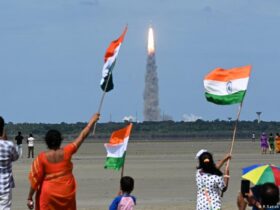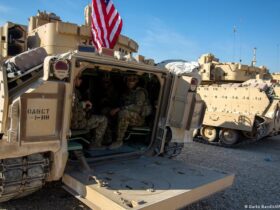South Korea on Sunday stepped up its investigation into the Jeju Air crash at Muan International Airport that killed all but two crew members on board the plane.
Shortly after issuing a distress call, the aircraft attempted an emergency “belly-landing” without landing gear. It skidded off the end of the runway and burst into flames upon contact with an embankment made of dirt and concrete shortly after the runway ended.
A South Korean transport ministry official said it was still too early to comment on a document, the airport’s 2024 operations manual, which references the embankment and recommends moving it to a safe distance in an upcoming expansion at the airport .
Authorities were still working to identify five of the victims, as families gathered at the airport demanding the release of their remains to allow cremation.
US investigators join fact-finding mission
The Transportation Ministry also said that eight US investigators – one from the Federal Aviation Administration, three from the National Transportation Safety Board, and four from Boeing – had joined the team at the site. The plane that crashed was a Boeing 737-800.
The government has announced precautionary checks of around 100 more such aircraft in the country, which is expected to be completed by January 3.
Both parts of the so-called “black box” have been recovered. But the ministry said the cockpit data recorder, often the most useful, was damaged, and officials were reviewing how to extract its normal flight data.
Retrieval of data from the cockpit voice recorder, which logs audio in the cockpit, was begun.
Acting President Choi Sang-mok on Monday ordered an emergency safety inspection of the country’s entire airline operations.
Jeju Air President Kim Ee-bae told reporters on Tuesday that his company will add more maintenance staff and reduce flight operations by 10-15% through March as part of efforts to enhance safety operations.
hydraulic issue suspected, embankment in headlines
Aviation expert John Hansman of MIT said that the accident was probably the result of a problem with the aircraft’s hydraulics and possibly its control systems.
He said this would be consistent with the landing gear and wing flaps not being deployed “and may be indicative of a control issue that would explain the rush to land.”
Investigators also said the pilots were warned of a possible bird strike during the flight.
Other analysts have said that the passengers and crew would have fared better in the already turbulent landing without the concrete barrier that grounded the plane.
“Unfortunately, that thing killed everybody, because they literally hit a concrete structure,” Captain Ross Eimer, chief executive of Aero Consulting Experts, told news agency Reuters. “It shouldn’t have been there.”
The embankment has a set of antennas to assist in safe landing. The airport’s operations manual states that it was closer to the end of the runway than international guidelines, about 199 meters (218 yd) away from it. International rules suggest a 240 meter safety zone.
National mourning till January 4, NYE celebrations muted
Both floors of Muan International Airport were also filled with mourners and people paying tribute on Tuesday.
Relatives bow before a makeshift altar decorated with chrysanthemums and photographs of the deceased.
Many New Year’s Eve celebrations were canceled across the country as the country mourns the worst air disaster in decades. The government declared a week of national mourning until 4 January.
msh/sms (AP, Reuters)






Leave a Reply